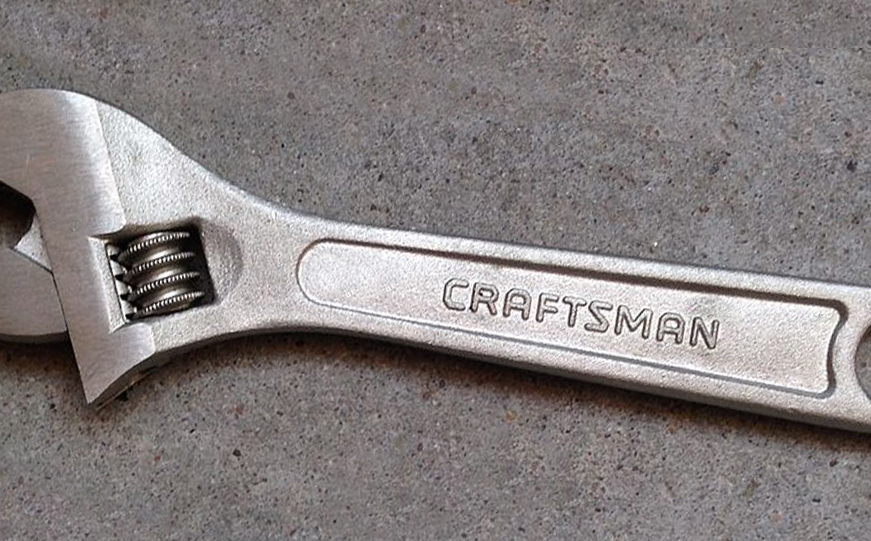When you go to branding school, one of the first things you learn is a lesson on the power of a brand, using the example of Coca-Cola.
The professor is likely to quiz the students: “If you could divide the Coca-Cola company into two parts — one part is all of the factories, bottlers, formula, buildings, equipment assets, and the other part is the Coke brand name and trademark — which would you take?”
Your answer better be the Coke brand.
Why? Because all of that other infrastructure and distribution can be replicated, but a brand with the magnitude of Coke would take generations to rebuild.
But aside from a lesson for marketing students, why would anyone consider that a company be parsed up in that way?
In a way, however, it just happened, and with an iconic American brand, no less. Not with Coke, but with Craftsman.
In a move designed to stave off insolvency, Sears just sold the Craftsman brand to Stanley Black & Decker for $900 million. While we’re sure there was more to the sale than the Craftsman name and branding standards manual, it all appears so very counter-intuitive to us.
We can’t help but think that Sears Holdings Corp. CEO Edward Lampert should have kept the Craftsman brand and sold everything else.
Mention the Craftsman brand to any red-blooded American male (and an increasing number of females), and they’ll rattle off a list of traits the brand has come to stand for. Durable, American made, strong, reliable. Despite missteps over the years, and the struggles of the brand’s caretakers at Sears, the Craftsman name is largely unspoiled.
We as marketers and branding nerds can all rest easy, as it appears the cherished Craftsman name is in good hands. We can also look back and remember what the Craftsman brand has been over the years.
Most importantly, we can take heed of some of the lessons Craftsman has taught us about how to build a strong brand:
Make a simple, strong promise
While we respect the role legal and actuarial professionals play in advising how building products and tools are marketed, how warm-n-fuzzy does it make you feel when you hear that a product has a “limited lifetime” warranty?
The Craftsman brand confidently stood for “Made in America. Guaranteed forever.” Forever. There’s no mincing words in that tagline.
Granted, it’s easy to guarantee forever if your product is essentially a hunk of nearly indestructible forged steel.
But the point is that a brand is the sum of the simplest, strongest promises it can build.
Keep innovating
When you think of Craftsman tools, you most likely think of the multi-piece wrench sets, neatly hanging in order of size on a pegboard. It’s a product that hasn’t been changed in a century.
Still, every year Craftsman came out with some new gadget or gizmo. Some were pretty superfluous (a battery-powered heated jacket, really?), others actually pretty smart.
But no matter what, those new products always caught the eye of their target audience (see below) and brought people into the Sears stores to buy them, along with the standard wrench sets. Craftsman never stood pat. They always found a way to capture consumers’ attention with their innovations.
Well, except for the battery-powered jacket.
Remember your audience
Since their founding in 1927, Craftsman stayed true to their two audiences: NASCAR mechanics and middle-aged, suburban men who secretly wished they were NASCAR mechanics. The second group was probably the biggest.
Craftsman has always been for the guys. They didn’t ebb into pink tools for women or co-brand with Star Wars to appeal to kids. They knew who their audience was and always, always connected with him. In fact, when Jimmy Carter was presented with a farewell gift as he departed from the White House, it was a Craftsman woodworking set.
In this day and age of an ever-changing landscape — where brands feel like they have to please everyone — it’s refreshing to see a brand remember who got them where they are.
—
So why hold onto the stores, Mr. Lampert? Will you be auctioning the DieHard battery and Kenmore appliance brands next? We’d advise instead, that you should have taken a page from Revlon’s playbook, as they are clearly prioritizing their brands over distribution. They realize astutely in this omni-channel age, that audiences are far less loyal to rigid shopping venues and that customer allegiance celebrates Brand Value over Brand Available.
So Stanley Black & Decker will now leverage the American-made, forever-guaranteed torch. We’re confident that the Craftsman brand is in good hands and will continue to occupy a prominent place in American garages for years to come.
As for its former parent brand, Sears… well, the future is not so bright.




